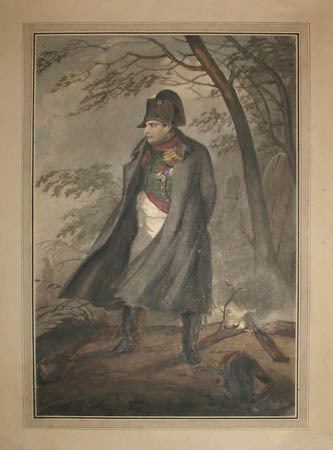Name Nicolas Charlet | ||
 | ||
Died October 30, 1845, Paris, France | ||
How to pronounce nicolas toussaint charlet french france pronouncenames com
Nicolas Toussaint Charlet (20 December 1792 – 30 October 1845), French designer and painter, more especially of military subjects, was born in Paris.
Contents

Life

Charlet was the son of a dragoon in the Republican army, whose death in the ranks left the widow and orphan in very poor circumstances. Madame Charlet, however, a woman of determined spirit and an extreme Bonapartist, managed to give her boy a moderate education at the Lycée Napoléon, and was repaid by his lifelong affection.

His first employment was a minor post in the Paris city administration, where he had to register recruits: he served in the National Guard in 1814, fought bravely at the Barrière de Clichy, and, being thus unacceptable to the Bourbon party, was dismissed from the city administration in 1816. He then, having from a very early age had a propensity for drawing, entered the atelier of the distinguished painter Baron Gros, and soon began issuing the first of those lithographed designs which eventually brought him renown.

His "Grenadier de Waterloo", 1817, with the motto "The Guard Dies and Does Not Surrender" (La Garde meurt et ne se rend pas)—a famous phrase frequently attributed to Cambronne, but which he never uttered, and which cannot, perhaps, be traced farther than to this lithograph by Charlet,—was particularly popular. It was only towards 1822, however, that he began to be successful in a professional sense. Lithographs (about 2000 altogether), water-colours, sepia-drawings, numerous oil sketches, and a few etchings followed one another rapidly; there were also three exhibited oil pictures, the first of which was especially admired "Episode in the Campaign of Russia" (1836), the "Passage of the Rhine by Moreau" (1837), "Wounded Soldiers Halting in a Ravine" (1843).

Besides the military subjects in which he particularly delighted, and which found an energetic response in the popular heart, and kept alive a feeling of regret for the recent past of the French nation and discontent with the present, a feeling which increased upon the artist himself towards the close of his career, Charlet designed many subjects of town life and peasant life, the ways of children, etc., with much wit and whim in the descriptive mottoes. One of the most famous sets is the "Vie civile, politique, et militaire du Caporal Valentin", 50 lithographs, dating from 1838 to 1842. In 1838 his health began to fail owing to an affection of the chest.
Charlet was an uncommonly tall man, with an expressive face, bantering and good natured; his character corresponded, full of boyish fun and high spirits, with manly independence, and a vein of religious feeling, and he was a hearty favourite among his intimates, one of whom was the painter Géricault. Charlet married in 1824, and two sons survived him.
Legacy
A life of Charlet was published in 1856 by a military friend, De la Combe.
